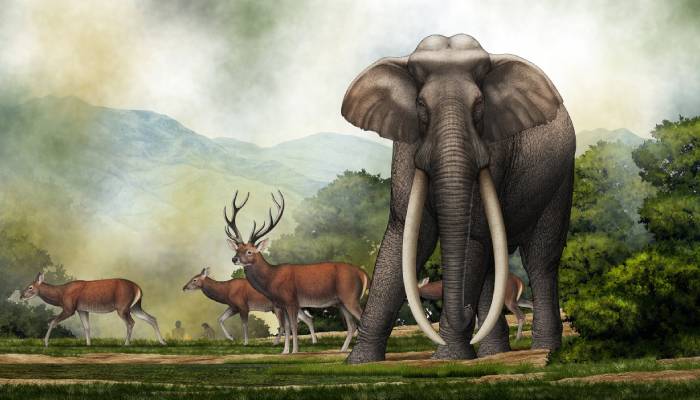
A massive fossil skull of an extinct elephant unearthed in northern India’s Kashmir Valley has provided valuable insight about a previously unclear phase of elephant evolution.
As per Scitechdaily, the skull, found alongside 87 prehistoric stone tools, was first unearthed in late 2000 under the guidance of Dr. Ghulam Bhat from the University of Jammu.
Recently, an international research team analyzed the fossil to determine its age and evolutionary significance.
Zhang, a palaeontologist from the University of Helsinki’s Department of Geosciences and Geography said in a statement, “From the general shape of the skull, it’s quite apparent that the elephant belonged to Palaeoloxodon, or straight-tusked elephants, among the largest land mammals that ever lived. Full-grown adults easily stood around 4m tall at the shoulder and weighed 9-10 tonnes.”
The statement added, “Yet what’s puzzled experts for some time is that the Kashmir skull lacks a thickened, forward-projecting crest at the skull roof which typifies other Palaeoloxodon skulls found in India.”
For decades, whether the developmental extent of this crest could tell apart different species of Palaeoloxodon and the relative position of these species on the evolutionary tree of elephants remained controversial.
This finding suggested that once specimen are aged by analyzing their teeth, it would be possible for researchers to compare skulls from individuals with similar maturity stages.
By analyzing protein decomposition in the tooth enamel of the Kashmir Palaeoloxodon skull and studying the stone tools found alongside the elephant remains, researchers revealed that Kashmir skull dates back to the Middle Palaeoloxodon between 300,000 and 400,000 years ago.
















